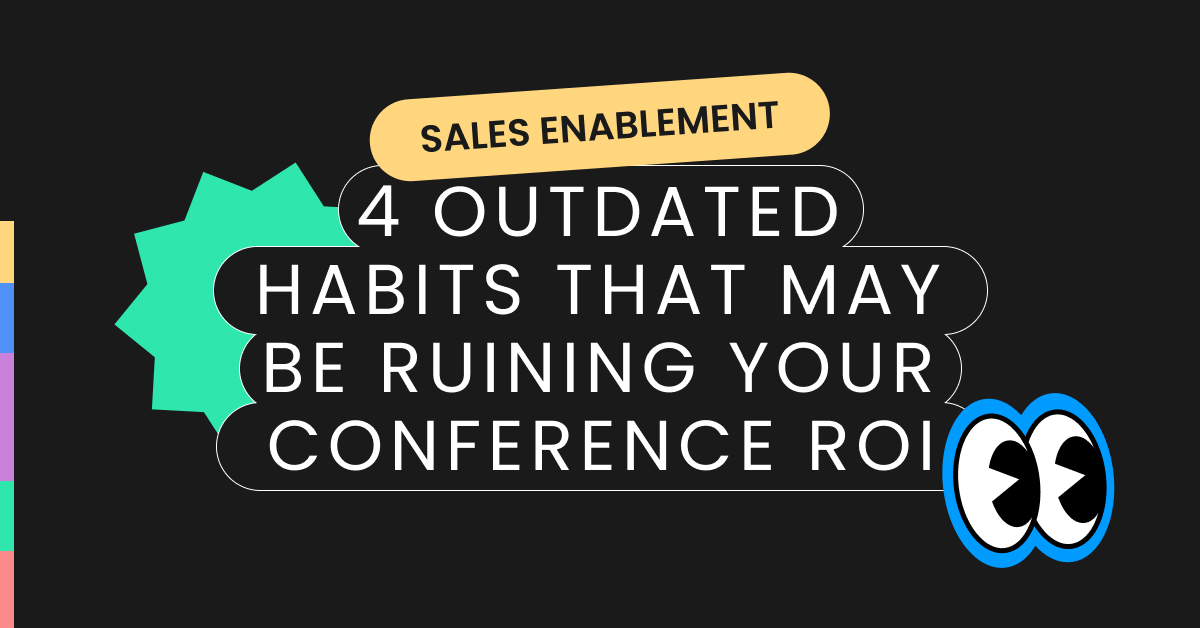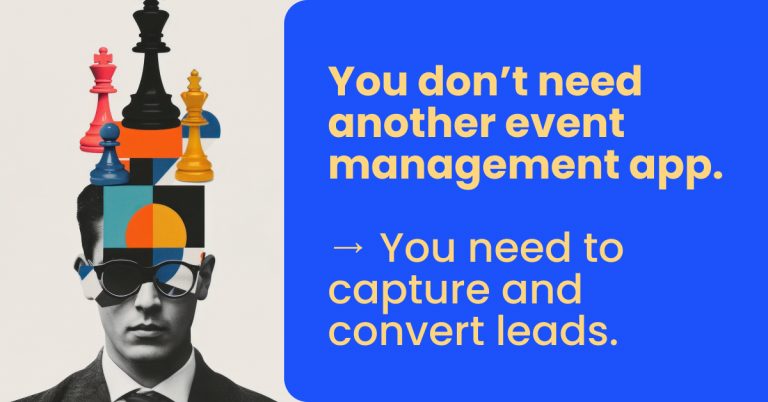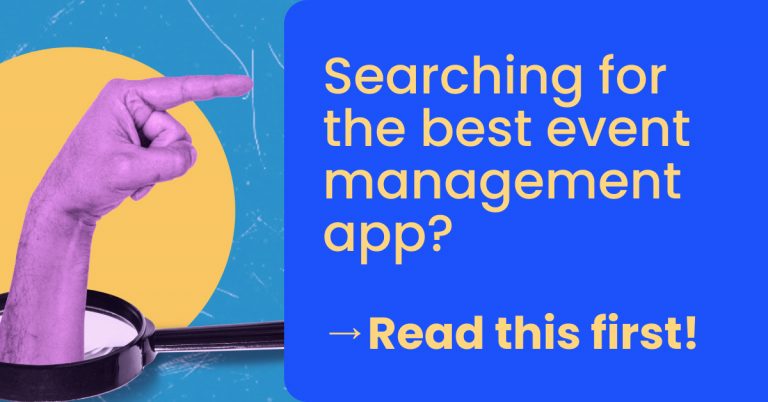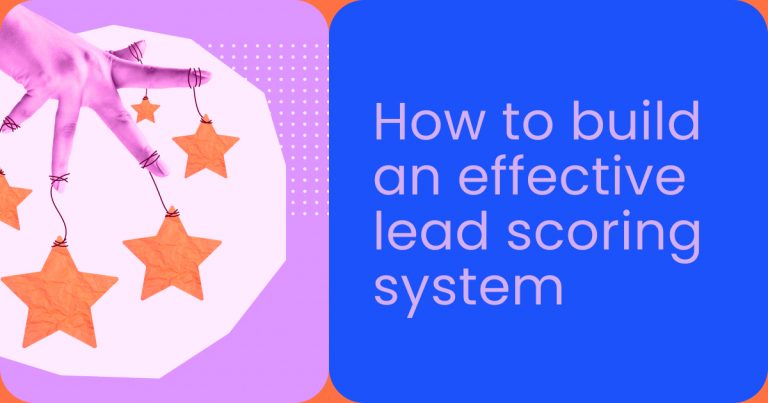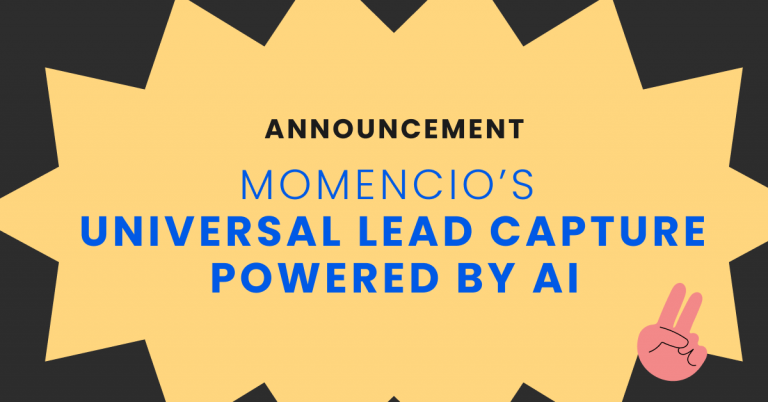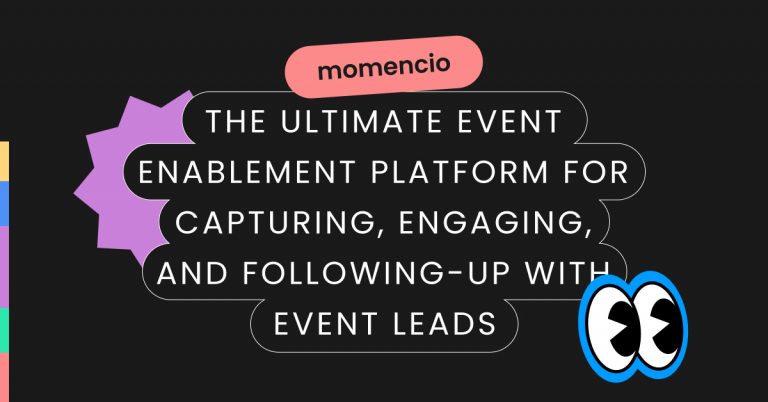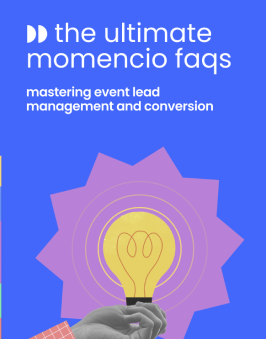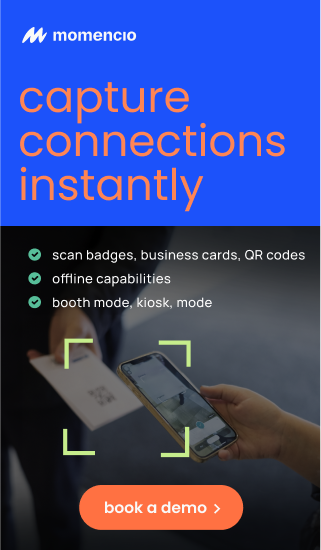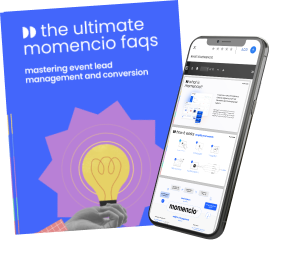4 outdated habits that may be ruining your conference ROI
TL;DR: Outdated habits, like manual lead capture and poor post-event follow-ups, can negatively impact conference ROI. This guide offers modern strategies for improving attendee engagement, lead management, and follow-up processes to ensure your conference delivers measurable business results.
In-person sales events, from trade shows to association conferences, are a truly valuable part of any organization’s sales and marketing strategy.
On top of brand recognition, showcasing your product, and getting a real handle on the concerns, pain points, and wants of your audience, these events provide the one-on-one connection that is so important in building a qualified lead and, eventually, closing a sale.
According to a study by The Center for Exhibition Industry Research, 79% of the attendees say that attending shows helps them decide on what products to buy.
However, what sounds like a surefire win can backfire for many companies that do not approach each event with a clear and modern strategy. While some things in sales never change, technology is greatly improving the way sales teams can move trade show leads into the sales funnel and improve their chance of conversion.
By approaching things the “same old way,” you not only run the risk of fewer sales but that the time and money spent on the event itself will not prove a great investment.
Are you guilty of using one of these antiquated approaches to conference exhibiting?
1. You collect lead information manually
The business card has not quite died, but it’s certainly not the most efficient manner through which to connect with attendees. In the worst-case scenario, the cards you collect could be misplaced or left behind. Even in the best situation, you have the bare minimum in terms of information, and you need to have someone manually enter that data into a CRM or other system. The result is a waste of time and lackluster lead data that does not provide any of the actually helpful information a sales rep could use to nurture the new contact.
2. You hand out brochures
Have you ever picked up a box of brochures fresh from the printer? It may surprise you — but those skinny little sheets of paper, when together with 500 of their friends, is heavy! And if your show is out of state, shipping them can be costly. Once they make their way to attendees, the issues continue as coffee is spilled, the wind blows, or items are placed on a table and forgotten. All of your printing and shipping costs are now for naught.
3. You spend all your time talking with attendees
At first glance, this looks like it should be a smart sales approach — focusing energy and time on real connection with those who stop by your booth. But if everyone staffing the event is in snooze mode, who is capturing all the engagement data? Unless you all have amazing memories, these conversations are only as good as the information that is then captured. Can you actually look at those business cards four days later and remember who is who, what they were most interested in, what brochure you gave them, and what issue your product could solve for them? Probably not.
4. You enter everything manually
Those business cards. Anything you can remember from your conversations. They usually go into a spreadsheet or your company’s CRM, but who gets that data there? It’s often you or another member of your staff who is spending valuable time typing away. Do they know what workflows to enroll them in so the connection is not lost?
If you have nodded your head at any of the above-outdated processes, you are not alone. It’s the way trade shows were built, and many will stick with the status quo, never realizing how much it is costing them.
But if you see now how these seemingly normal activities are potentially costing you time, money, and sales, it’s time to take action.
The most obvious alternative is to invest in technology like momencio. You may have been to a larger conference that provides tag scanners or an app that will quickly collect the information of those who visit your booth, which is a major help and time saver.
You may also consider a content management system that allows you to send personalized content to the leads as soon as they leave your table. Try capturing your notes with a voice recorder shortly after a conversation with a prospect while the details are still fresh and using an app to transcribe the notes for you reliably.
Or you can do all of that and more by opting for a lead retrieval system that tracks all interactions and resulting data from lead retrieval to in-booth engagement to follow-up communications.
Integrate with your CRM and experience the most seamless process. This will greatly improve your sales and marketing efforts and, in turn, your conference ROI.
How post-event follow-up drives higher conference ROI
One of the most overlooked ways to improve conference ROI is through strategic, personalized follow-up. Many organizations focus heavily on planning and executing their events but lose momentum once the conference wraps up. Effective post-event follow-up tactics can be the difference between a lead that goes cold and one that turns into a long-term business relationship.
To maximize post-event impact, the first step is to nurture leads through targeted follow-up content. Rather than sending generic emails, tailor each follow-up message based on attendees’ behaviors at the event. For instance, if certain leads showed strong interest in specific sessions, products, or demos, the follow-up should include content that builds on those topics. This approach, known as high-conversion lead strategies, keeps leads engaged by aligning directly with their interests and pain points.
Using marketing automation for event follow-ups can streamline this process significantly. Automation enables you to create a sequence of emails that can be personalized at scale, ensuring that each attendee receives content relevant to their journey. For example, after an event, you can set up an automated series of emails that includes session recaps, exclusive whitepapers, and case studies related to their interactions at the conference. This consistent engagement strengthens your brand’s presence and nudges leads closer to conversion.
But personalization doesn’t stop there. Implementing lead scoring and prioritization allows you to identify which leads are most engaged and ready for a sales conversation. By assigning a score based on their event activities—such as attending a high-value session or downloading post-event resources—sales teams can prioritize high-potential leads. This approach ensures that your sales efforts are focused on prospects with the greatest likelihood to convert, maximizing the ROI from each lead captured at the event.
FAQs
- ROI conference: What are some common outdated habits that could impact conference ROI?
- Outdated habits that can impact conference ROI include relying solely on traditional marketing methods, neglecting digital engagement opportunities, sticking to old networking techniques, and underestimating the importance of post-conference follow-up.
- Why is relying solely on traditional marketing methods considered outdated for conference ROI?
- Traditional marketing methods, such as print ads or direct mailings, may not effectively reach modern audiences who are more engaged online. Utilizing digital marketing strategies can help target a wider and more relevant audience, ultimately improving conference ROI.
- How does neglecting digital engagement opportunities affect conference ROI?
- Neglecting digital engagement opportunities such as social media promotion, email marketing, and virtual participation options can limit the reach and engagement of your conference. By embracing digital platforms, you can increase attendee interaction, generate buzz, and ultimately enhance ROI.
- What are some outdated networking techniques that could harm conference ROI?
- Outdated networking techniques like relying solely on in-person interactions or sticking to familiar faces can limit your networking potential. Embracing new methods, such as virtual networking platforms or structured networking events, can help maximize connections and improve ROI.
- Why is post-conference follow-up crucial for maximizing ROI?
- Post-conference follow-up is essential for maintaining attendee engagement, nurturing leads, and fostering ongoing relationships. Neglecting this aspect can result in missed opportunities for further engagement or conversion, ultimately reducing the conference’s overall ROI.
